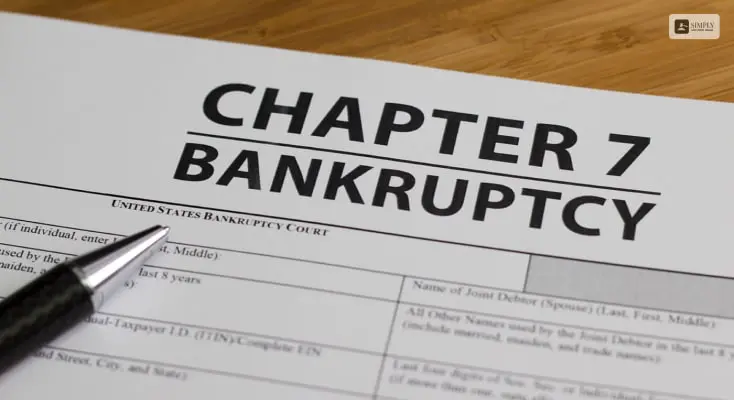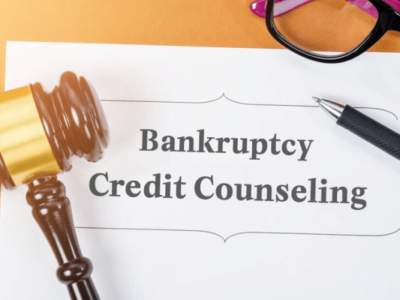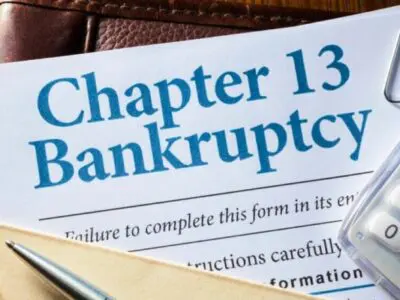
You have heard about the term bankruptcy at least once in your life. Bankruptcy is a serious business that requires a clear understanding to effectively understand the matter.
In this article, we will be discussing the process of filing for Chapter 7 bankruptcy.
What Is Chapter 7 Bankruptcy?

Alright, picture this: you’re struggling with your finances, buried under a mountain of debts that seems impossible to climb. It’s like trying to swim upstream in a raging river of bills and creditors knocking on your door. In this financial wilderness, Chapter 7 bankruptcy can sometimes be your lifeboat.
So, What Is Chapter 7 Bankruptcy, You Ask?
Well, think of it as the “Fresh Start” chapter in the book of bankruptcy. Here’s the deal: Chapter 7 bankruptcy is a legal process in the United States that allows individuals and businesses to wipe the financial state clean. It’s like hitting the reset button on your finances. However, not everyone gets to press that button; there are some eligibility criteria involved.
First things first, you’ve got to pass the “means test.” No, it’s not a pop quiz but a way to check if your income falls below a certain threshold. If it does, you might qualify for Chapter 7.
More To Chapter 7 Bankruptcy
Now, let’s talk about your debts. Chapter 7 bankruptcy mainly deals with unsecured debts like credit card bills, medical expenses, and personal loans. Secured debts, like your mortgage or car loan, aren’t off the hook. You may need to decide whether to give up the collateral (like your house or car) or find a way to keep making those payments.
Once you file for Chapter 7, something magical happens- an “automatic stay” goes into effect. It’s like a protective shield that stops creditors from hounding you for money. No more annoying phone calls or threatening letters. They can’t touch you or your property during this period.
But here’s the catch: In exchange for this fresh start, a Chapter 7 trustee steps in. They’re like the financial referee, responsible for selling your non-exempt assets and distributing the proceeds to your creditors.
Here’s the good news: Many assets, like your basic necessities, are usually protected. Things like your home, car, clothing, and even some of your personal possessions are often safe.
Once the process is complete, which usually takes a few months, you’ll receive a discharge. That’s the golden ticket that wipes out most of your qualifying debts. It’s your second chance to build a brighter financial future.
So, while Chapter 7 bankruptcy may sound daunting, it’s often seen as a lifeline for those drawing in debt. It’s your chance to hit that reset button, regain your financial footing, and start a new chapter in your financial journey.
How To File For A Chapter 7 Bankruptcy?

Of course! Filing for a Chapter 7 bankruptcy might seem like a daunting task, but here we are providing you with a step-by-step process through which you can easily file for a Chapter 7 bankruptcy.
1. Assess Your Eligibility: Passing the Means Test
Before you dive headfirst into the Chapter 7 bankruptcy process, you need to check if you’re eligible. This is where the “Means Test” comes into play. No, it’s not a test you study for it’s a way to see if your income falls below a certain threshold. If your income is less than your state’s median income for a household of your size, you generally pass the test. If not, don’t despair; there are more calculations to determine your eligibility.
2. Get Your Financial Documents in Order
Bankruptcy is a paperwork-heavy process, so it’s essential to get organized. Start by gathering all your financial documents: tax returns, pay stubs, bank statements, and a list of your assets and liabilities (debts). You’ll also need to compile a detailed list of your monthly living expenses.
3. Credit Counseling: A Mandatory Pit Stop
Before you hit the “file” button, you’ll need to complete a credit counseling course from an approved agency. This is a mandatory step, and it’s designed to help you explore alternatives to bankruptcy and better understand your financial situation. Once you’ve completed the course, you’ll receive a certificate, which is crucial for the next step.
4. Prepare Your Bankruptcy Petition and Schedules
Now, it’s time to start working on your bankruptcy petition, schedules, and other required forms. If you’re not familiar with legal jargon, don’t worry- there are software programs and bankruptcy attorneys available to guide you through this part. You’ll need to list all your assets, income, expenses, debts, and any recent financial transactions.
5. File Your Bankruptcy Petition
Once your paperwork is in order, it’s time to file your bankruptcy petition with the bankruptcy court in your area. There will be filing fees, but if your income is low enough, you may qualify for a fee waiver.
6. The Automatic Stay: Welcome to Debt Relief
As soon as you file your bankruptcy petition, an “automatic stay” kicks in. This magical legal shield protects you from creditors, halting all collection actions, including phone calls, letters, and lawsuits. It’s a sigh of relief in the midst of financial turmoil.
7. Meeting of Creditors: Facing the Music
You’ll be required to attend a “341 Meeting of Creditors,” which may sound intimidating but is typically a straightforward process. It’s an opportunity for your creditors and the bankruptcy trustee to ask you questions about your finances. Don’t worry; they won’t grill you like a detective in a crime movie.
8. Financial Management Course
After the meeting of creditors, you’ll need to complete a financial management course. This course is different from the credit counseling course you took earlier. It’s designed to help you manage your finances better in the future.
9. Receive Your Discharge: The Grand Finale
Assuming everything goes smoothly, you’ll receive your bankruptcy discharge. This is the golden ticket – it wipes out most of your qualifying debts, giving you a fresh start. Keep in mind that not all debts can be discharged, such as student loans and certain tax debts.
10. Rebuild Your Credit and Move Forward
After your Chapter 7 bankruptcy is complete, it’s time to start rebuilding your credit and taking control of your financial future. It’s not an instant process, but with responsible financial behavior, you can bounce back.
Remember, you don’t have to go through this process alone. Many bankruptcy attorneys and resources are available to guide you. Filing for Chapter 7 bankruptcy can be a lifeline to escape overwhelming debt and start anew on your financial journey.
Final Thoughts
Now, you have a fair idea regarding the ways you can effectively file a Chapter 7 bankruptcy. You can always take advice from an experienced bankruptcy attorney to effectively file bankruptcy under Chapter 7 of the Bankruptcy Code of the US.
I hope you have found this article useful and informative, and do share your thoughts on ways you can make use of Chapter 7 bankruptcy to start a new financial era.
Read Also:


